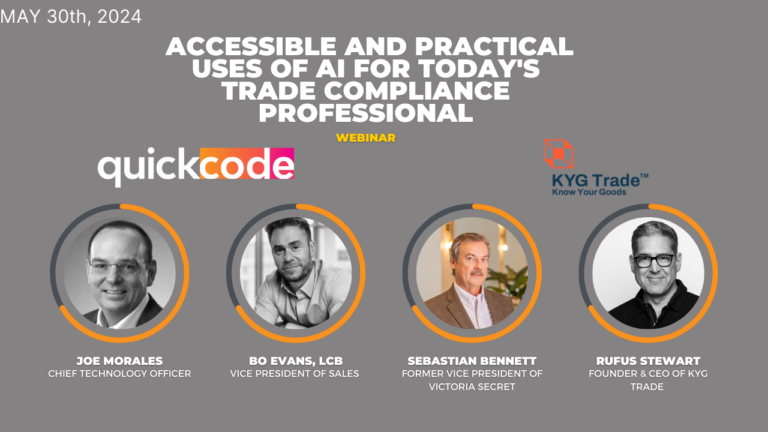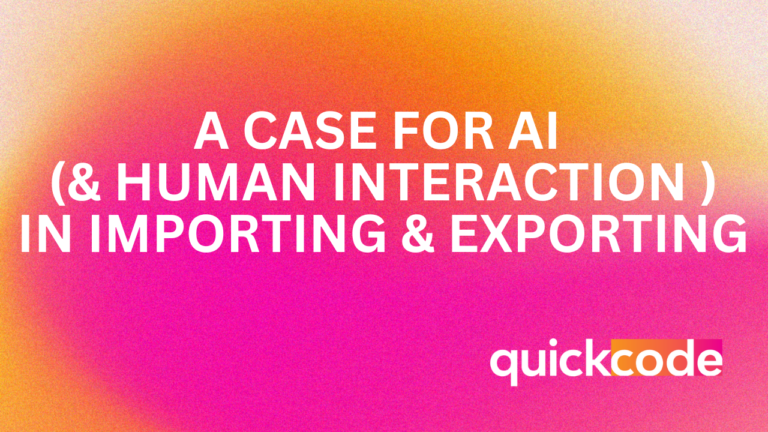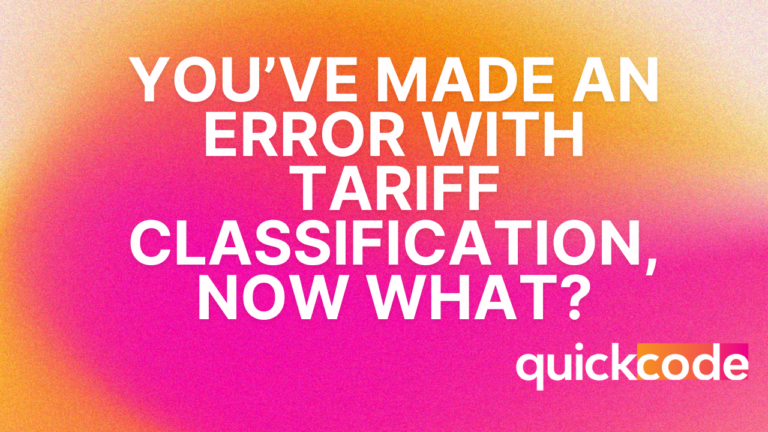Watch the video below to see experts from Quickcode and KYG Trade discuss using AI to give experts all the tools they need to make Trade Compliance faster, more accurate, and more repeatable.
As trade compliance professionals, we are constantly looking for ways to enhance efficiency and accuracy in our work. In this webinar, we delve into the accessible and practical uses of AI for today’s trade compliance professionals, exploring the impact of artificial intelligence on the industry and how it can revolutionize trade compliance practices.
Overview of Artificial Intelligence in Trade Compliance
Artificial intelligence aims to encode expert knowledge into machines, enabling capabilities similar to human intelligence. Early AI systems in trade compliance were rule-based engines, while the new wave involves generative AI models trained on large chunks of text. It’s important to note that AI in trade compliance empowers professionals to work faster and smarter, but human involvement remains crucial for evaluating and confirming AI output.
AI’s Role in Determining Goods Qualification for Duty Preference Rules
AI assists in quickly and effectively analyzing bill of materials to determine goods’ eligibility for preference rules and aids in ensuring the correct application of rules for final approval by professionals. It’s a valuable tool that complements human classifiers, aiming to speed up the classification process without replacing them.
AI for Classification and Compliance Monitoring
Various AI approaches are currently used for product classification in an orchestration platform, offering users flexibility and access to multiple models simultaneously. The platform tracks the performance of different models over time, providing empirical data for user decision making. Additionally, AI can update and bring attention to compliance issues automatically, reading and understanding more data than a human in a given time.
AI Implementation Challenges and Solutions
Challenges in AI implementation revolve around convincing management and demonstrating scalability, including overcoming resistance due to cost and time concerns. However, AI offers scalability and efficiency without significantly impacting resources, and it’s crucial to emphasize that AI will not replace compliance professionals but enhance their capabilities, driving the need for training and addressing concerns about being replaced by AI.
AI for Ongoing Trade Compliance Monitoring and Image Recognition
AI becomes a force multiplier for trade compliance professionals and regulators, enhancing enforcement, increasing regulatory oversight, and enabling faster container classification before landing. Additionally, AI’s image recognition capabilities aid in comparing images of products for shipment verification and finding the right supplier for implementing AI solutions.
Unlocking AI’s Potential with QuickCode AI
Ready to transform your trade compliance processes? QuickCode AI offers state-of-the-art AI solutions that empower you to work smarter and faster, ensuring compliance with unparalleled efficiency. By integrating our advanced AI tools into your workflow, you can stay ahead of the curve, streamline operations, and enhance accuracy in goods classification and compliance monitoring. Embrace the future of trade compliance with QuickCode AI and witness firsthand how our technology can elevate your business. Join the revolution today and let QuickCode AI be your trusted partner in navigating the complexities of trade compliance.







